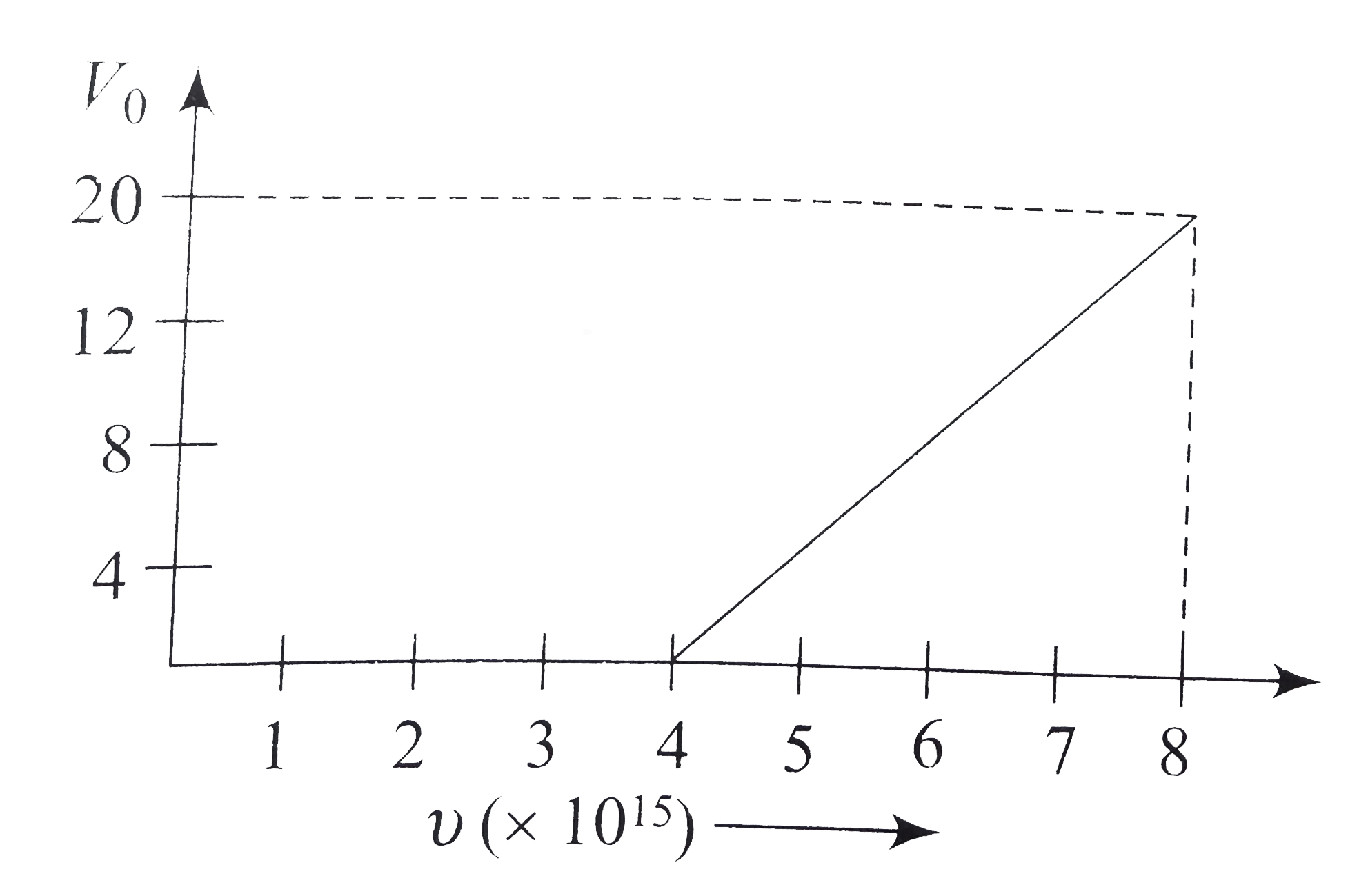When a high frequency electromagnetic radiation is incident on a metallic surface, electrons are emitted from the surface. Energy of emitted photoelectrons depends only on the frequency of incident electromagnetic radiation and the number of emitted electrons depends only on the intensity of incident light.
Einstein's protoelectron equation [Kmax=hv−ϕ} correctly ecplains the PE, where υ= frequency of incident light and ϕ= work function.
Q. The slope of the graph shown if Fig. [here h is the Planck's constant and e is the charge of an electron] is
he
eh
h
eh
The correct Answer is:A
eV0=hv−hv0
V0=hev−hev0
Y=mn+e
Slope=he
Topper's Solved these Questions
- BOOK - CENGAGE PHYSICSCHAPTER - PHOTOELECTRIC EFFECTEXERCISE - Integer9videos
PHOTOELECTRIC EFFECT
- BOOK - CENGAGE PHYSICSCHAPTER - PHOTOELECTRIC EFFECTEXERCISE - Single Correct Answer Type7videos
PHOTOELECTRIC EFFECT
- BOOK - CENGAGE PHYSICSCHAPTER - PHOTOELECTRIC EFFECTEXERCISE - Multiple Correct10videos
PHOTOELECTRIC EFFECT
- BOOK - CENGAGE PHYSICSCHAPTER - NUCLEIEXERCISE - QUESTION BANK59videos
NUCLEI
- BOOK - CENGAGE PHYSICSCHAPTER - RAY OPTICSEXERCISE - DPP 1.612videos
RAY OPTICS
Similar Questions
If frequency of radiation incident on a photosensitive surface is doubled, the maximum kinetic energy of emitted photoelectrons also gets doubled.
View SolutionWhen ultraviolet radiation is incident on a surface , no photoelectrons are emitted If a second beam causes photoelectrons to be ejected, it may consist of
View Solution
Knowledge Check
- Question 1 - Select One

When a high frequency electromagnetic radiation is incident on a metallic surface, electrons are emitted from the surface. Energy of emitted photoelectrons depends only on the frequency of incident electromagnetic radiation and the number of emitted electrons depends only on the intensity of incident light.
Einstein's protoelectron equation [Kmax=hv−ϕ] correctly ecplains the PE, where υ= frequency of incident light and ϕ= work function.
Q. For photoelectric effect in a metal, the graph of the stopping potential V0 (in volt) versus frequency υ (in hertz) of the incident radiation is shown in Fig. The work function of the metal (in eV) is.A12.5B14.5C16.5D18.5 - Question 2 - Select One
When a high frequency electromagnetic radiation is incident on a metallic surface, electrons are emitted from the surface. Energy of emitted photoelectrons depends only on the frequency of incident electromagnetic radiation and the number of emitted electrons depends only on the intensity of incident light.
Einstein's protoelectron equation [Kmax=hv−ϕ} correctly ecplains the PE, where υ= frequency of incident light and ϕ= work function.
Q. Light of wavlength 3300 is incident on two metals A and B, whose work function are 4 eV and 2 eV, respectively. ThenAA will emit photoelectrons but B will notBB will emit photoelectrons but A will notCboth A and B will not emit photoelectronsDneither A nor B will emit photoelectrons - Question 3 - Select One
When light is incident on a surface, photoelectrons are emitted. For photoelectrons,
Athe value of kinetic energy is same.Bkinetic energy does not depend on the wavelength of incident light.Cthe value of kinetic energy is more than a certain minimum energy.Dnone of the above.
Statement-1: Kinetic energy of photoelectrons increases with increases in the frequency of incident radiation
Statement-2: The number of photoelectrons ejected increases with increases in intensity of incident radiation.View SolutionWhen yellow light is incident over a metal surface no electrons are emitted while green light can emit electrons if red light is incident over the surface then
View SolutionAssertion : Photoelectric current depends on the intensity of incident light.
Reason : Number of photoelectrons emitted per second is directly proportional to intensity of incident radiation.View SolutionWhen the frequency of light incident an a metallic plate is doubled , the KE of the emitted photoelectrons will be :
View SolutionAssertion: Kinetic energy of photoelectrons emitted by a photosensitive surface depends upon the frequency of incident photons, provided that it is greater than the threshold frequency.
Reason: Number of photoelectrons depends on the intensity of incident radiation.View Solution

